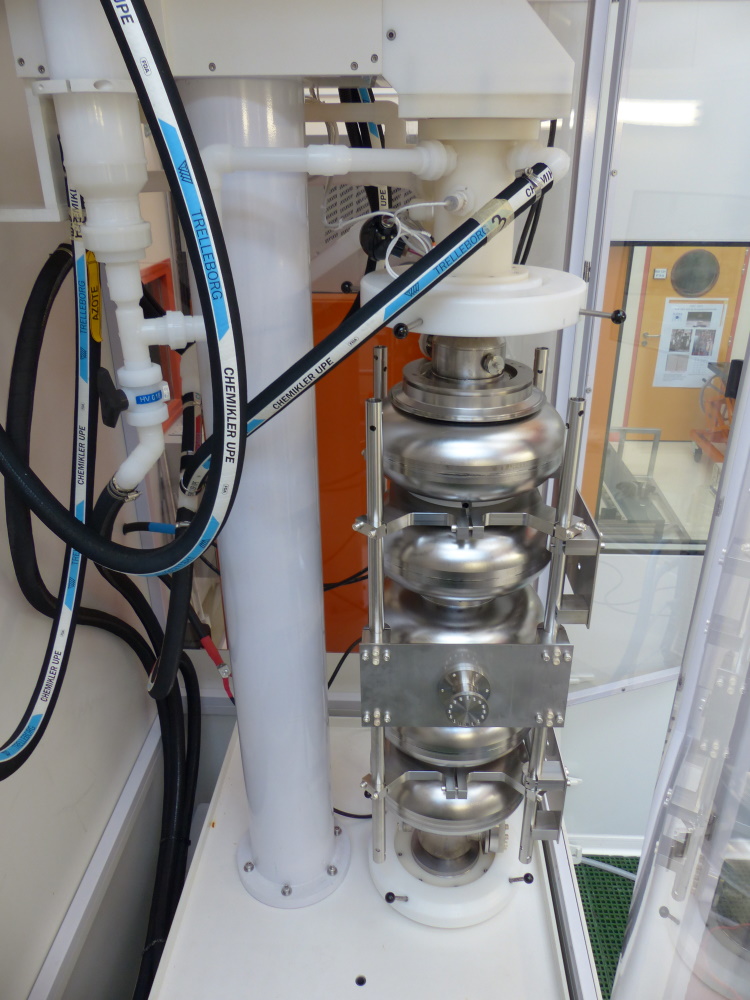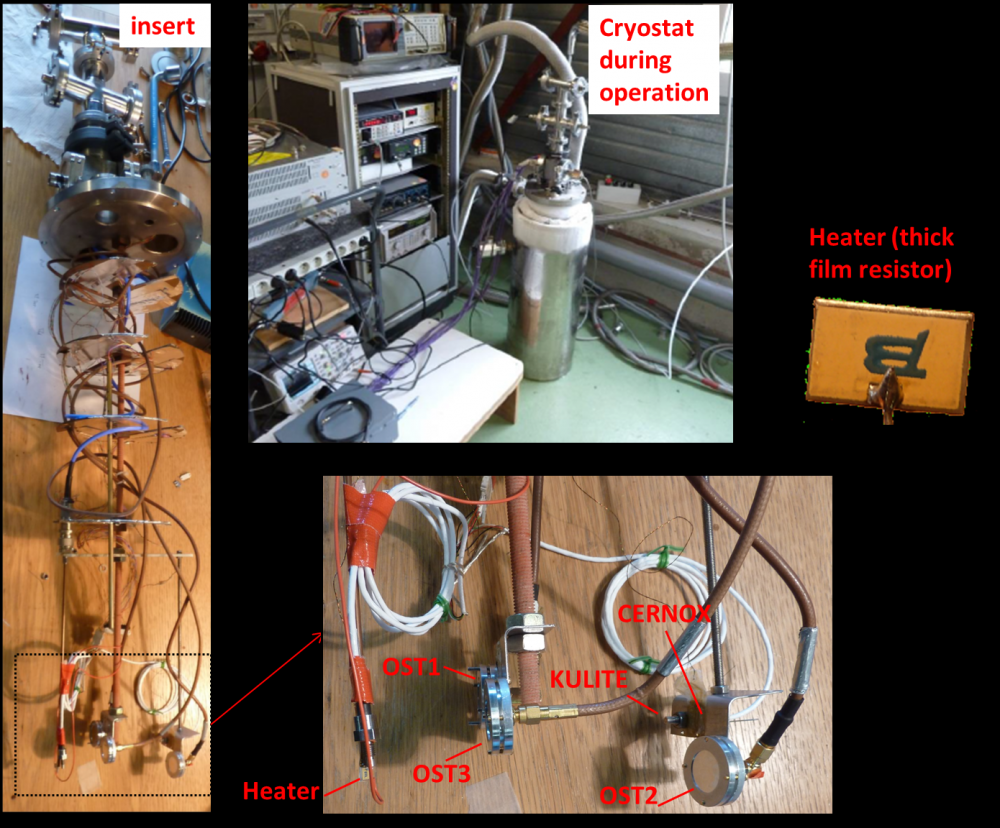Nowadays, niobium is the essential material for manufacturing accelerating radio frequency (RF) cavities because it gives the best performance. In these cavities, the superconductivity is confined to the extreme surface of the material, i.e. the first 50 nanometers, which must be free from crystalline, chemical and morphological defects. R&D on surface treatments aims to develop optimal treatment techniques (cleaning, polishing, heat treatments), which if possible are transferable to an industrial environment.
One of the processes studied is the electrochemical polishing (electropolishing) of cavities, which is currently producing the highest accelerating fields. This process has been used to treat cavities designed for high-intensity applications.
It is important to locate and identify defects that cause the niobium to transition to a normal state (quench).
Studying the propagation of thermal waves in superfluid helium simplifies the process of locating the quench site by reducing the number of sensors.
The performance levels obtained with niobium are now close to the theoretical optimum. The development of nanocomposites (superconductors alternated with insulators) could increase the acceptable theoretical magnetic field and therefore the accelerating field for future accelerators. Choosing the proper superconductor could reduce losses even more.
ELECTROPOLISHING
The system for electropolishing elliptical cavities in a vertical position (which underwent acceptance in 2011) has been improved to enable it to handle the SPL cavity as part of the EuCARD project. The vertical configuration is particularly adapted for the treatment of these large multi-cell resonators (1.3 m, volume 90 l), while ensuring the safety of the operators. The SPL cavity reached a 20 MV/m field after heat treatment, setting a new performance standard for this type of structure. The experiment revealed a process asymmetry.
SPL CAVITY DURING ELECTROCHEMICAL TREATMENT
A device for observing the inside of a single-cell cavity during treatment has been developed, so it is now possible to view the fluids, and particularly the dihydrogen evolution. Areas of hydrogen stagnation on the upper part of the cell have been observed; this has been improved by using a Teflon mesh membrane surrounding the cathode to trap the gas around the cathode. The cavity is also turned over midway through the process.
IDENTIFYING QUENCH LOCATION USING THE SECOND SOUND METHOD
Local heating due to the phenomenon of quench generates a “second sound” thermal wave in the superfluid helium, which can be captured by OSTs (Oscillating Superleak Transducers). By measuring the resulting travel time, it should be possible to locate the quench using triangulation. SACM has used this method in many tests of single-cell cavities, where the location of the quench had previously been identified by temperature measurement on the external surface of the cavities. A discrepancy with the model for a second sound wave propagating at the predicted speed was systematically identified: the travel times of the wave were shorter than expected. The hypotheses being studied are: a large quench area (several square centimeters) rather than a number of small ones, or a change of phase, or even boiling of the helium near the quench location, which would mean that the thermal wave would no longer be purely a “second sound” wave. We decided to test the last of these hypotheses by measuring the arrival time of a second sound wave emitted by a small resistor (34 mm²). The power emitted in the form of a pulse was measured, up to values of more than one kilowatt. This shows that the second sound wave model remains valid in the case of a very small source, even at high flux levels.
During these measurements, the travel time of the thermal wave was as predicted at all power levels. It therefore appears that other aspects of quench dynamics need to be considered to understand precisely the phenomena at work at the niobium/helium interface and explain the travel times measured in the cavity tests.
NANOCOMPOSITE SUPERCONDUCTOR DEVELOPMENT
The first results published by SACM, which prove the validity of this concept proposed by theoretical physicist Aleksandr Gurevich in 2006, have now been confirmed by several universities working on this subject in the international community. When it comes to optimizing these structures, the main difficulty is being able to rapidly measure the performance of a large number of samples. To do so, SACM has developed a special magnetometer that should make it possible to attain fields ~10 times higher than similar existing equipment, within temperature ranges corresponding to the conditions of use of the cavities, including at T<2 K. The field from which dissipation appears can be used to predict the expected improvement in accelerating field. The other important parameter (RF surface resistance) also requires the development of special “sample” cavities, which are currently being made in the context of collaborations. SACM is also involved in several collaborations on multi-layer sample deposition by several different methods and layer characterization, notably: IN2P3/CSNSM: deposition of layers by molecular beam epitaxy (MBE) and RF characterization of the layers in a TE011 cavity; Eucard2 WP12.2 thin films, with deposition of layers at INP Grenoble by atomic layer deposition (ALD) or sputtering (CERN), and characterization (magnetometry at Saclay and RF characterization in a quadrupole cavity at HZB) and finally KEK for the theoretical development.
• Accelerator physics and technology › R&D and Instrumentation for Future Accelerators






